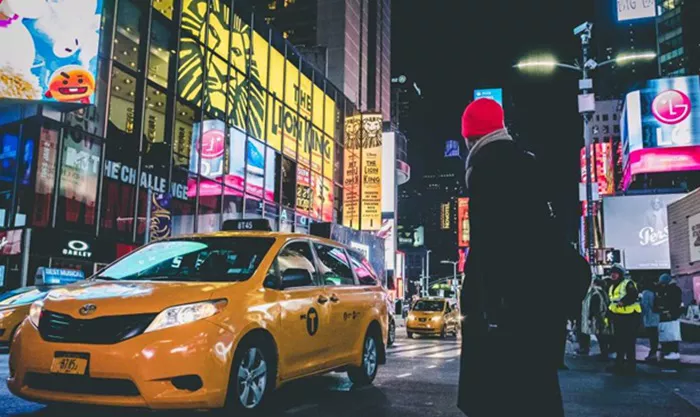New York experiences four distinct seasons, each with its own weather quirks. Summers can be hot and humid, with temperatures often soaring above 30°C (86°F). Thunderstorms are common during this time, so it’s a good idea to carry an umbrella or a lightweight rain jacket. Winters, on the other hand, are cold and snowy. Temperatures frequently drop below freezing, and blizzards can occur. If you’re visiting in winter, pack warm layers, including a thick coat, gloves, a hat, and waterproof boots.
Spring and fall are more temperate but can be quite variable. One day might feel like summer, and the next could be chilly. Layering your clothing is key during these seasons. A light sweater or long – sleeved shirt paired with a jacket allows you to adjust to the changing temperatures throughout the day.
Dress Code Flexibility
New Yorkers have a diverse sense of style, and the dress code is relatively relaxed in most places. However, if you plan to visit upscale restaurants, theaters, or attend formal events, you’ll want to dress a bit more formally. For men, this could mean wearing slacks and a button – down shirt, while women might opt for a dress or a nice blouse and skirt. When exploring the city during the day, comfortable walking shoes and casual clothing are the way to go, as you’ll likely be doing a lot of walking.
Cost of Living and Budgeting
High Expenses
New York is one of the most expensive cities in the world. Accommodation, in particular, can be a significant expense. Hotels in Manhattan, especially in popular areas like Times Square or Fifth Avenue, can be very costly. Even budget hotels and hostels can be more expensive compared to other cities. If you’re on a tight budget, consider staying in the outer boroughs like Brooklyn or Queens, where accommodation is often more affordable, and you can still easily access Manhattan using public transportation.
Food costs also vary widely. Street food, such as hot dogs, pretzels, and pizza slices, is relatively inexpensive and a great option for a quick and cheap meal. However, dining at restaurants, especially upscale ones, can be quite pricey. Groceries are also more expensive than in many other parts of the United States. When planning your budget, factor in these higher costs and look for ways to save, like eating at local diners or taking advantage of happy hour specials.
Tipping Culture
Tipping is an important part of New York’s culture. In restaurants, it’s customary to tip 15 – 20% of the total bill before tax, depending on the quality of service. This applies to both sit – down restaurants and cafes. For taxi drivers, a tip of around 15% is standard, and for ride – sharing services like Uber or Lyft, you can add a tip through the app. Hotel staff, such as bellhops and housekeeping, also expect a tip. Be sure to carry some cash for tipping, as not all places accept card payments for tips.
Public Transportation
Subway System
The New York City subway is one of the most extensive and convenient ways to get around the city. It operates 24 hours a day, 7 days a week. However, it can be a bit confusing for first – time visitors. There are multiple lines, and some trains run express while others make all stops. Make sure to check the subway maps carefully, which are available at stations and online. You can also use mobile apps like Google Maps or Citymapper to plan your route and get real – time information about train schedules and delays.
To ride the subway, you’ll need a MetroCard. You can purchase a single – ride card, a 7 – day unlimited card, or a 30 – day unlimited card, depending on how long you’ll be in the city and how often you plan to use the subway. Keep your MetroCard safe, as you’ll need it to enter and exit the stations.
Buses and Other Options
Buses are another option for getting around, especially if you want to see the city at a slower pace or need to reach areas not easily accessible by subway. Bus routes are clearly marked, and you can pay with your MetroCard or exact change in cash. Taxis and ride – sharing services are also readily available, but they can be more expensive, especially during peak traffic times. If you prefer to explore on foot, many of New York’s neighborhoods are very walkable, but be prepared for long distances and lots of steps.
Safety and Security
General Precautions
Like any big city, New York has its share of safety concerns. While most areas are safe during the day, it’s important to be cautious, especially at night. Avoid walking alone in dimly lit or unfamiliar areas, and keep an eye on your belongings at all times. Pickpocketing can occur in crowded places like Times Square or on the subway, so keep your bags zipped and close to your body.
If you’re using an ATM, make sure it’s in a well – lit and busy area, and cover the keypad when entering your PIN. When taking taxis or ride – sharing services, confirm the driver’s identity and the vehicle details before getting in.
Emergency Services
In case of an emergency, dial 911. This number connects you to police, fire, and medical emergency services. Familiarize yourself with the location of the nearest hospital or pharmacy, especially if you have any medical conditions or need to purchase medication.
Conclusion
In conclusion, knowing these key aspects before going to New York will help you have a more enjoyable and stress – free trip. From preparing for the weather and budgeting for expenses to navigating the public transportation and staying safe, a little planning can make a big difference in your New York experience.

